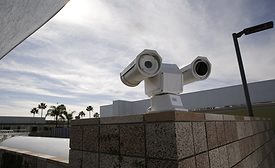Coronavirus Blogs
A key role in corporate security leadership is in understanding global vulnerabilities. Here, we cover essential security information for security executives about Coronavirus.
ARTICLES
Will 2020 be the cybersecurity wakeup call healthcare needed?
The pandemic exposed the need for hospitals to shore up security fundamentals and infrastructure, re-think incident response plans, and use tools rationalization to reduce coverage gaps.
June 1, 2021
Get our new eMagazine delivered to your inbox every month.
Stay in the know on the latest enterprise risk and security industry trends.
SUBSCRIBE TODAY!Copyright ©2024. All Rights Reserved BNP Media.
Design, CMS, Hosting & Web Development :: ePublishing















